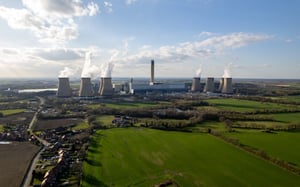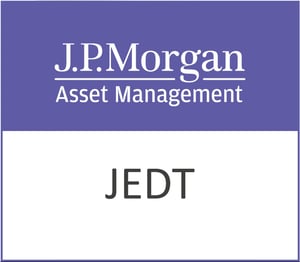All information is at 31 March 2020 and unaudited.
Performance at month end with net income reinvested.
| One | Three | Six | One | Three | Five | ||
| Month | Months | Months | Year | Years | Years | ||
| Net asset value | -17.5% | -29.8% | -29.6% | -29.8% | -23.9% | -12.8% | |
| Share price | -19.0% | -35.7% | -35.5% | -37.9% | -30.8% | -28.4% | |
Sources: Datastream, BlackRock
| At month end | ||
| Net asset value – capital only: | 53.10p | |
| Net asset value cum income*: | 53.61p | |
| Share price: | 44.40p | |
| Discount to NAV (cum income): | 17.2% | |
| Net yield: | 9.0% | |
| Gearing – cum income: | 8.4% | |
| Total assets: | £64.6m | |
| Ordinary shares in issue: | 113,470,349 | |
| Gearing range (as a % of net assets): | 0-20% | |
| Ongoing charges**: | 1.5% |
*Includes net revenue of 0.51p.
**Calculated as a percentage of average net assets and using expenses, excluding any interest costs and excluding taxation for the year ended 30 November 2019.
| Sector Analysis | % Total Assets^ | Country Analysis | % Total Assets^ | |
| Integrated Oil, Gas and Energy | 34.5 | Global | 64.8 | |
| Diversified Mining | 22.3 | USA | 12.5 | |
| Gold | 16.7 | Canada | 9.5 | |
| Copper | 12.0 | Latin America | 6.5 | |
| Exploration & Production | 5.3 | Australia | 4.3 | |
| Distribution | 4.6 | Asia | 2.4 | |
| Silver | 3.8 | South Africa | 1.7 | |
| Diamonds | 2.2 | Africa | 0.3 | |
| Platinum Group Metals | 0.6 | Net Current Liabilities^ | -2.0 | |
| Net Current Liabilities^ | -2.0 | —– | ||
| —- | 100.0 | |||
| 100.0 | ===== | |||
| ===== |
^ Total Assets for the purposes of these calculations exclude bank overdrafts, and the net current asset figure shown in the tables above therefore exclude bank overdrafts equivalent to 6.3% of the Company’s net asset value.
Ten Largest Investments
| Company | ||||
| Region of Risk | % Total Assets | |||
| First Quantum Minerals* | Global | 9.0 | ||
| BHP | Global | 7.6 | ||
| Barrick Gold | Global | 5.7 | ||
| Total | Global | 5.4 | ||
| Royal Dutch Shell ‘B’ | Global | 4.8 | ||
| BP Group | Global | 4.6 | ||
| Chevron | Global | 4.6 | ||
| Newmont Mining | Global | 4.4 | ||
| Vale | Latin America | 4.4 | ||
| Rio Tinto | Global | 4.2 |
*The holding in First Quantum Minerals includes both an equity holding and a holding in several bonds.
Commenting on the markets, Tom Holl and Mark Hume, representing the Investment Manager noted:
The Company’s NAV decreased by 17.5% during the month of March (in GBP terms).
Global equity markets continued to fall during the month, as a number of countries entered lockdown, in an effort to contain the spread of the coronavirus. For reference, the MSCI World Index fell by 13.2%. The shutdowns associated with the coronavirus will have a material negative impact on demand and supply of mined commodities. However, mining companies are benefitting from currency moves and the fall in oil prices, which has been beneficial for cost savings. In addition, going into this crisis, the mining sector was one of the least levered sectors, therefore the outlook for dividends relative to other sectors remains relatively bright.
Mined commodity prices continued to come under pressure, with zinc, aluminium and copper returning -5.7%, -11.0% and -12.1% respectively. Iron ore posted moderate negative returns, with its price falling by 0.6% in March. Elsewhere, the gold price was up by 1.6% on the month, reaffirming its safe haven status in times of market volatility. Similar to last month, gold equities lagged the gold price; it seems that gold equities have been sold as investors seek to lock in the strong gains seen over 2019 to cover losses elsewhere. However, whilst liquidity and other factors are impacting markets in unusual ways, gold companies are well placed to weather this period and are making strong profits at current gold prices. Therefore, we see this dislocation between the gold equities and the gold price as temporary and not related to fundamentals.
Within the energy sector, in addition to the reduction in oil demand, OPEC and Russia failed to agree to production cuts. The prospect of excess oil supply caused spot oil prices to fall by over 60% over the month and caused energy equities to also fall. Oil prices decreased, with Brent and WTI (West Texas Intermediate) returning -62.6% and -56.5%, to end the period at prices of $19/bbl and $20/bbl respectively. The implications for global oil markets, where transportation accounts for more than half of annual demand, are that consumption levels look set to contract notably during the second quarter such that annual average demand could contract by up to 5% for 2020 (estimate), a much greater decline than in the Global Financial Crisis in 2008.
All data points in US Dollar terms unless otherwise specified. Commodity price moves sourced from Thomson Reuters Datastream.
BlackRock Energy and Resources Income Trust Plc aims to achieve an annual dividend target and, over the long term, capital growth by investing primarily in securities of companies operating in the mining and energy sectors.







































